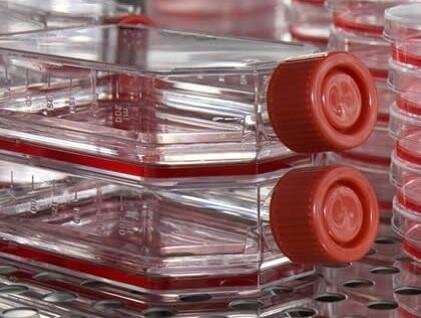Eliminating viruses in our food with cranberries and citrus fruit

Fresh produce is a major vehicle for noroviruses, a group of viruses that are the most common cause of gastroenteritis in developed countries. However, the viruses are quite resistant to cold pasteurization treatments such as irradiation, which are used to destroy bacteria, moulds, parasites, and insects. The irradiation process uses gamma rays or X-rays to destroy these viruses but at the dose needed to eliminate them, it can affect the physicochemical properties of fresh produce.
Professor Monique Lacroix, a researcher at Institut National de la Recherche Scientifique (INRS), has developed an edible coating based on cranberry juice and citrus extract that makes noroviruses more sensitive to gamma irradiation, making it possible to eliminate them while preserving the quality of food, all without risk to consumers.
A fruit extract spray
The idea is to spray fresh produce such as lettuce or strawberries and then treat it with cold pasteurization such as irradiation. The organic acids and polyphenols in cranberry juice and citrus extract would alter the viral protein and help inhibit its activity.
"Noroviruses usually require an irradiation dose of three kilograys (kGy), but we have shown that the treatment time is reduced by half with this fruit mixture spray, which acts as a natural antimicrobial. Using these natural antimicrobials prevents cell breakdown or brown discolouration," reports Monique Lacroix, lead author on the study whose results were published online on February 12 in the Journal of Applied Microbiology.
Professor Lacroix's team is the first to test the cranberry juice and citrus extract mixture in a combined treatment. "Both the juice and extract have the ability to remove noroviruses when used alone, but when combined with cold pasteurization in the same treatment, the fruit concentrations required are significantly lower," says the food science expert.
Norovirus Contamination
Norovirus contamination can occur before and after harvest. Contaminated water runoff from fields can bring in fecal matter. Food can be contaminated by infected people who handle it.
"Unlike bacteria, noroviruses do not multiply on food. They are deposited there and remain there until a human being is infected," says Alexandra Gobeil, first author of the study and a recent master's graduate in Applied Microbiology at INRS.
Monique Lacroix and her team have tested the coating on lettuce, one of the most fragile vegetables in terms of preservation. She hopes to eventually develop a partnership with the food industry to test combinations of treatments involving natural fruit extracts and cold pasteurization (e.g., UV-C, X-ray, gamma ray, or ozonation) on a commercial scale.
More information: A. Gobeil et al, Radiosensitivity increase in FCV‐F9 virus using combined treatments with natural antimicrobials and γ‐irradiation, Journal of Applied Microbiology (2020). DOI: 10.1111/jam.14596
No comments:
Post a Comment